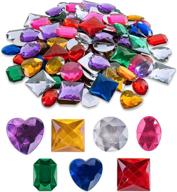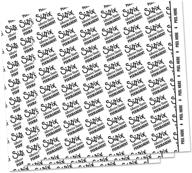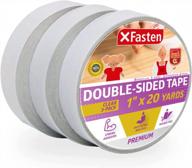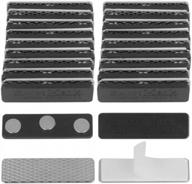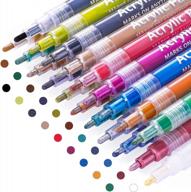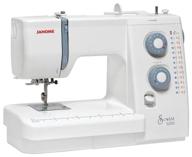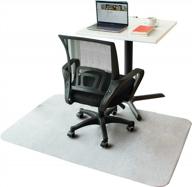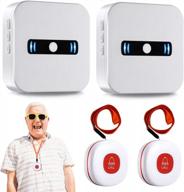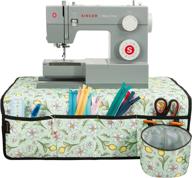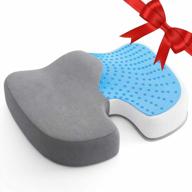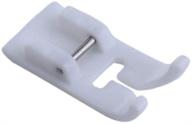Must-Have Sewing Machine Accessories for Beginners
Starting sewing can be an exciting yet overwhelming experience, especially when it comes to purchasing all the necessary accessories and attachments. Having the right sewing tools will make learning to sew much easier and help you get better results right from the start. Here are some of the must-have sewing machine accessories for beginners.
Sewing Machine Feet
Sewing machine feet allow your machine to perform specialty techniques like zipper insertion, buttonholes, hemming, and more. Here are some useful feet for beginners:
- Zipper foot - For inserting centered and invisible zippers
- Buttonhole foot - For making buttonholes of consistent length
- Rolled hem foot - For finishing raw edges with a neat rolled hem
- Walking foot - For feeding fabric evenly to prevent shifting of layers
Needles
Using the proper needle for your fabric type is key for avoiding skipped stitches, puckered seams, or snagged fabric. Have an assortment of the following needles on hand:
| Needle Types | Uses |
|---|---|
| Universal/sharp needles | All-purpose for woven fabrics |
| Stretch needles | Knits, swimwear, fleece, lycra |
| Denim/jeans needles | Denim, canvas, heavyweight fabrics |
| Leather needles | Leather, vinyl, faux leather |
Another interesting products
Thread
Choosing the right thread thickness and fiber content will prevent tangled messes and uneven stitching. Here are some threads for beginners to have on hand:
- All-purpose polyester thread - For everyday sewing on most fabric types
- Cotton thread - Provides a soft luster for sewing natural fibers like cotton
- Invisible thread - For nearly unseen stitching in hems and applique work
- Heavy duty thread - For outdoor, leather, or canvas projects
Seam Ripper
A must for undoing stitching mistakes and picking out basting stitches. Look for one with a sharp tip and comfortable handle.
Measuring Tools
Accurate measurements are vital in sewing. Have these tools on hand:
- Tape measure
- Rulers and yardsticks
- Gauge tool for checking stitch length
- Tracing wheel for marking darts and pleats
Similar products
Needle Threader
A needle threader tool slides the thread through the eye of the needle quickly and easily. This inexpensive accessory saves frustration and eyestrain.
Seam Gauge
A seam gauge ensures accurate seam allowances. Simply set the gauge to the desired seam width and run it alongside the fabric as you sew.
Equipping your sewing machine with these handy accessories will make learning to sew easier and help you achieve professional-looking results right off the bat!
Sewing Machine Feet and Their Uses
One of the best ways to expand the capabilities of your sewing machine is by using specialized presser feet. The right foot for the job will give you more control and lead to professional-looking results. Here's an overview of some common sewing machine feet and their uses.
Top products in 🔩 Sewing Machine Parts & Accessories
Zipper Foot
A zipper foot has a narrow shape to allow sewing close to the zipper teeth. It's used for:
- Inserting centered zippers in garments, pillows, bags.
- Stitching invisible zippers where zipper is hidden in a seam.
For example, use a zipper foot when inserting a centered zipper in the back seam of a dress. The slim profile lets you get close enough to edge stitch the zipper tape in place.
Buttonhole Foot
The key feature of buttonhole feet is a space in the front for a buttonhole slit to pass under. This foot is used for:
- Making uniform buttonholes in garments.
- Eyelets, round bound buttonholes.
Having a buttonhole foot allows you to sew buttonholes of a consistent length every time. For instance, use it to sew 1" buttonholes down the front of a cardigan sweater.
Blind Hem Foot
A blind hem foot has a guide that rides along the fold of the hem, making it easier to catch just a sliver of fabric for an invisible hem. Use it for:
- Invisible hems on curtains, pants, skirts.
- Unseen sleeve hems.
The blind hem foot is perfect for hemming pants to get that barely visible stitching on the inside of the leg. The built-in guide helps you maintain the correct width as you sew.
Rolled Hem Foot
This foot works by curling the fabric edge over as you sew, creating a dainty rolled edge. It's great for:
- Making delicate hems on sheer, lightweight fabrics.
- Ruffled edges like on a flamenco dress.
Use a rolled hem foot anytime you want to add a pretty finish to a fabric edge, like making a rolled hem on the ruffle of a tiered dance skirt.
Walking Foot
A walking foot feeds fabric from both the top and bottom and is used for:
- Sewing slippery fabrics or multiple layers to prevent shifting.
- Match plaids, stripes, or patterns perfectly.
The walking foot evenly grips and advances your fabric as you sew. Try it when sewing a quilt with thick batting to keep the fabric layers from slipping while you sew.
Experimenting with new presser feet opens up a whole range of decorative and functional techniques. Always refer to your machine's manual for how to properly attach and use specific specialty feet.
Choosing the Right Needles and Threads
Having the proper sewing needles and threads for your fabric type is essential for achieving quality results and preventing frustrating problems. Follow this guide to select the best options for your projects.
Needle Types
Needles come in a variety of types designed for specific fabrics. Here are the main ones to know:
- Universal/Sharp: An all-purpose needle suitable for most woven fabrics. Good for projects using cotton, silk, rayon, polyester.
- Stretch: Has a special scarf to prevent skipped stitches in knits. Choose for spandex, jersey, fleece, synthetic suedes.
- Denim/Jeans: A sharp point pierces tightly woven fabrics. Use for denim, canvas, microfibers.
- Leather: Features a wedge-shaped point that parts leather fibers. Ideal for leather, vinyl, faux leather.
- Ballpoint: Rounded tip slips between knit fibers rather than piercing them. For jersey, interlock, rib knits.
For example, use a stretch needle when sewing a fleece jacket to avoid skipped stitches in the thick fabric. Consult your pattern or fabric tag to determine the best needle choice.
Needle Sizes
The smaller the needle size number, the finer the needle. Sizes include:
- 60-80: Lightweight fabrics - chiffon, georgette, crepe.
- 70-90: Medium weight fabrics - cotton, rayon, polyester, linen.
- 80-110: Heavyweight fabrics - canvas, denim, tweed.
Matching needle size to fabric weight prevents punctured or run stitches in delicate cloths and broken needles in thick fabrics. For example, size 80 for quilting cottons, size 90 for denim.
Thread Fiber Types
Fiber content affects thread properties like strength, elasticity, and luster. Main types include:
- Cotton: Soft sheen, ideal for sewing natural fibers. Can weaken when wet.
- Polyester: Strong, colorfast all-purpose thread for anything. Has a slight shine.
- Nylon: Extremely strong and elastic. Use for swimwear and outdoor gear.
- Silk: Luxurious shine and drape. Prone to tangling so avoid for machine sewing.
For example, cotton thread has a nice softness for bed sheets, while polyester works well for drapes that will be washed frequently.
All-Purpose vs. Heavyweight
Look at thread weight for the right amount of strength:
- All-purpose: Suitable for most fabrics from chiffon to denim. Won't damage delicate fabrics.
- Heavy duty: A higher weight for tough outdoor projects and leather. Can shred delicate fabrics.
All-purpose thread in the 40-50 weight range can tackle most sewing projects. Move up to 60 weight for heavy canvas or leather projects requiring reinforced seams.
Choosing needles and threads suited to your fabrics will lead to successful sewing. Always test them out on fabric scraps first to check stitch appearance.
Maintenance Tips to Keep Your Sewing Machine Running Smoothly
With regular care and cleaning, a quality sewing machine should provide many years of trouble-free service. Here are some key maintenance tasks to help keep your machine in top working order.
Clean and Oil Moving Parts
Sewing machines require regular oiling to lubricate moving metal parts and prevent corrosion:
- Use only sewing machine oil - never use household oils which can gum up.
- Oil every 4-6 hours of stitching time.
- Check manual for oiling points, but focus on needle bar, presser foot, and inner workings.
- Sew a test sample after oiling to clear any excess.
Proper oiling reduces friction and wear on delicate sewing machine parts. A poorly oiled machine will be noisy and prone to breaking needles and thread.
Remove Lint and Dust
Accumulated lint and dust can clog up the inner mechanisms. Clean frequently:
- Use a small brush to remove lint and threads from feed dogs and bobbin case.
- Use compressed air to blow dust out of motor vents and tight spaces.
- Cover machine when not in use.
Regular lint removal improves stitch quality by preventing jams and skipped stitches caused by fuzz buildup interfering with machine components.
Change Needles Often
Needles should be changed frequently to avoid problems:
- Insert a new needle for each sewing project.
- Immediately replace bent, dull or damaged needles.
- Use only needles recommended for your machine's make and model.
Old needles can cause crooked or looped stitches, thread breakage, or damage to machine parts. A fresh needle also helps prevent skipped stitches in the fabric.
Maintain Motor Power
Clean the motor area regularly to keep it running strong:
- Use compressed air to clear dust from the motor casing and vents every 3 months.
- Clean built up gunk from the handwheel with rubbing alcohol.
- Test machine power by sewing through 6 layers of denim.
A clean, powerful motor is crucial for the machine to operate optimally. Loss of power can result in poor stitch quality and formation.
Caring for your sewing machine doesn't take much time but will keep it happily sewing for years to come. Refer to your user's manual for any additional maintenance recommendations.
Sewing Gadgets And Accessories
Sewing gadgets and accessories can make your sewing projects easier and more efficient. Here are some examples of these products:
Sewing Accessories
Sewing accessories can make your sewing projects easier and more efficient. Here are some examples of these products:





